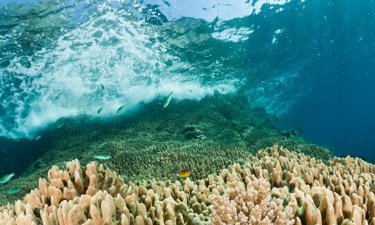How Coral Reefs Protect Our Coastlines
What exactly are coral reefs, ecosystems often called "tropical rainforests of the ocean"?
- Maintaining Marine Biodiversity. Coral reefs provide habitats for marine life, with 25% of marine life dependent on them.
- Protecting Coastlines. Coral reefs protect fragile coastlines from erosion, forming breakwaters that absorb or mitigate 70%-90% of the impact of waves.
- Maintaining Fisheries. Many commercially valuable fish species rely on coral reefs for food and breeding grounds. Reef flats are also used for cultivating pearls, Eucheuma, Gelidium, and trevally.
- Mitigating the Global Warming Effect. During the reef-building process, corals absorb large amounts of carbon dioxide through their zooxanthellae, thereby mitigating the global warming effect.
- Global warming is having a significant impact on coral reefs. Human theft and trafficking are also exacerbating the loss of coral reefs. Protecting coral reefs is urgent.

- Avoid harming, damaging, or illegally harvesting coral reefs and the marine life they inhabit.
- When spending time at the beach, be mindful of not dumping trash and waste to maintain a clean marine environment.
- Do not keep, purchase, or use organisms from coral reef ecosystems, and do your best to protect the habitats of marine life.
- Strictly abide by relevant laws and regulations and avoid any illegal activities that could damage coral reef ecosystems.
- Actively participate in and support coral reef conservation efforts to promote the sustainable development of coral reef ecosystems.
- Speak to your family and friends about the importance of protecting coral reefs and join them in caring for the marine environment.




